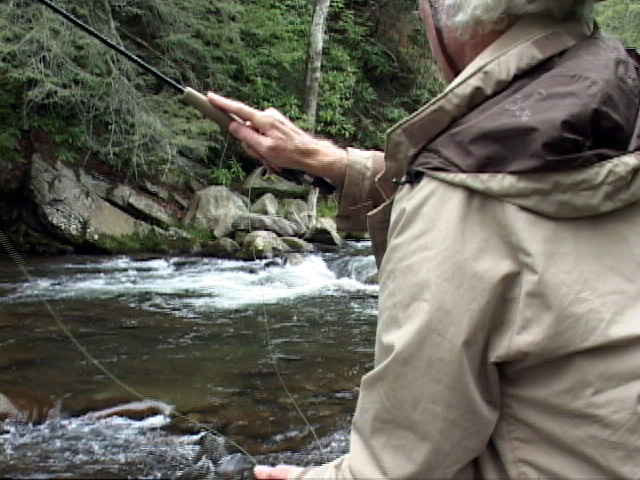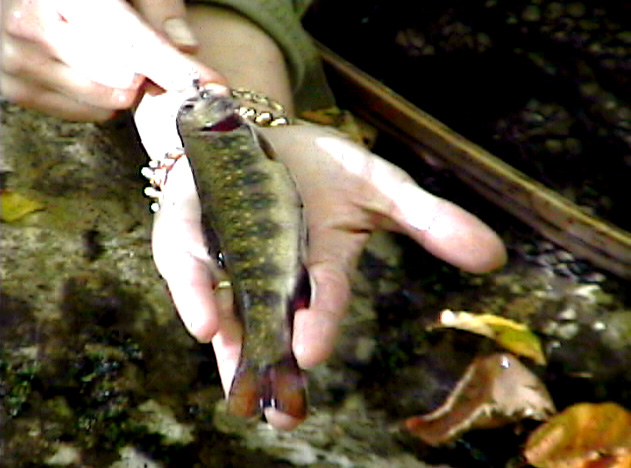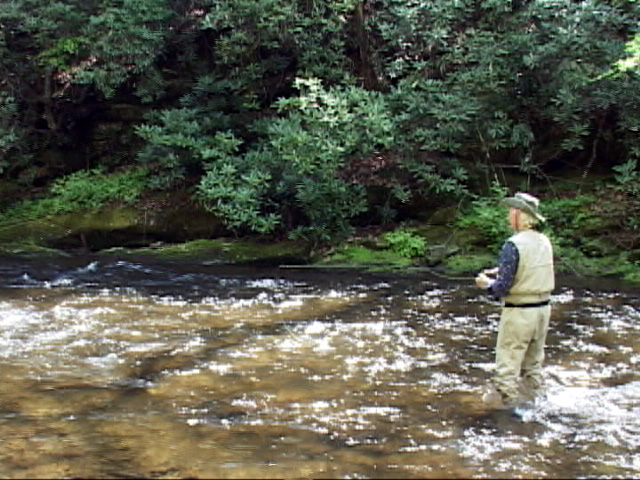
cast and in fact, can’t do that in
most places you will be fishing.
Notice the trees overhead.
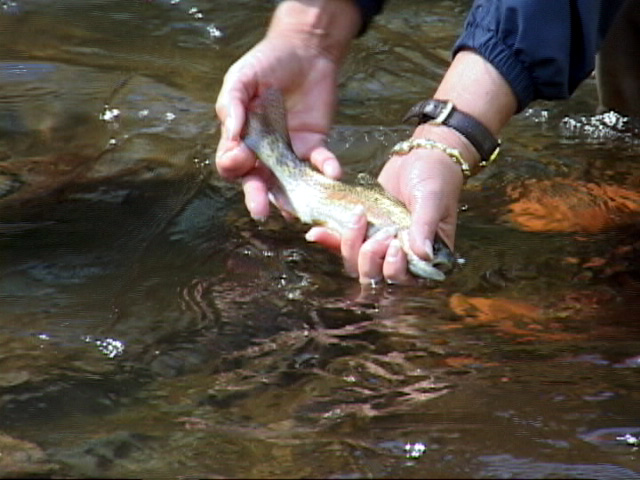
than the others. This is a nice one
caught on the Little Pigeon River
near Chimneys Picnic area.
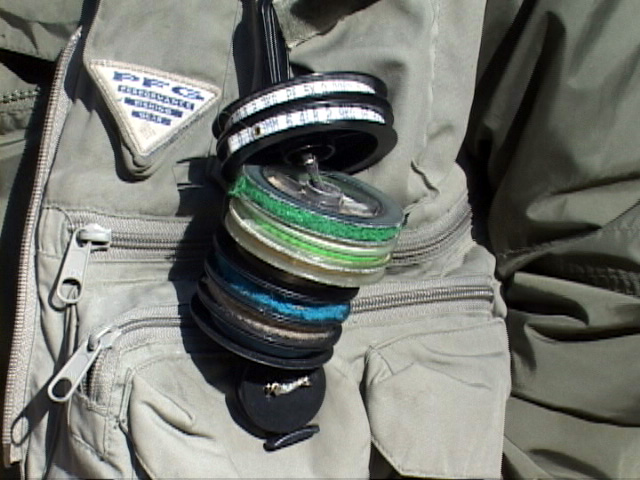
where it is easy to get to.
The following is a list of things some more things that we hope will help you arrive at Great Smoky Mountains National Park with everything you need to fly fish these beautiful, freestone mountain streams. If you are new to fly fishing, you may want to read this section of our website on Gear before proceeding with this.
Fly Rods;
Unlike what many fly rod companies, fly shops and anglers want you to think, the fly rod is not the most critically important thing there are when it comes to fly fishing. It doesn’t take a $800.00 fly rod for you to catch trout in the Smokies or anywhere else, for that matter. You can catch just as many trout on a rod that cost less than $100.00. You don’t need to make long cast in the Smokies. Short cast are the normal thing for fishing the small streams.
Now that I have said that, like anything else, they make good, better and best fly rods. Some cast better than others, some are lighter than others and some look better than others. You do not need a fast action rod to fish the Smokies. I suggest a medium action or even a slow action if you like to feel the cast. These actions will also protect the light tippets.
You you only have one fly rod, I suggest you use a 4 weight rod that is from 8 and one-half to 9 feet long. An 8 foot rod is okay, if you already have one. I suggest also having the following fly rods if you want to cover every fly fishing situation you may encounter. A 5 weight rod that is 8 and one-half to 9 feet long with a medium or medium-slow action.
You may want to bring a rod specifically for nymph fishing, although the 5 weight rod will probably work okay. I suggest a 6 weight, 9 foot long, medium to medium-fast action rod. A rod that is slightly stiffer will offer an advantage when you are nymph fishing. You want to be able to cast heavier flies and to be able to detect strikes easily.
There can be conditions where you would want a heavier 7 weight rod for casting heavy streamers. The 6 weight will work for most streamer fishing and even the 5 weight for lighter streamers.
Ninety percent of the time, I only carry two rods when I am fishing in the Smokies (and backups in case I break one). A 4 weight rod that I use for dry fly fishing and a 5 weight rod that I use for larger dry flies, nymphs and streamers. I rarely use a 6 or a 7 weight.
Fly Reels:
You need the appropriate size reels for the fly rods you are using, of course. You can get by with the cheap graphite models but I suggest one with a good drag. There are some large brown trout in the small streams of the Smokies and you don’t want to loose one because your drag didn’t work properly, or wasn’t set right, by the way.
Fly Line:
The fly line should match the weight of the fly rod. You only need floating fly lines. Shooting heads and sinking lines are not necessary for 99 percent of the fly-fishing situations you could encounter in the Smokies. I suggest floating, forward tapered lines. Double tapered lines are also okay. I prefer subdued shades of color, preferably green.
Fly Leaders:
The leader is very important. Have plenty of them in the right sizes. Nylon monofilament leaders are fine. You can go the fluorocarbon route if have more confidence in them. I don’t happen to fall into that category. I use nylon mono. Bring preformed, tapered leaders in 4X and 5X sizes for certain. I would also suggest at least 2 each of 3X, 6X and 7X size leaders. You want the 4X, 5X and 6X leaders in both a 7 and one-half foot length and a 9 foot length. The 3X should be in a 7 and one-half foot length and the 7X tippet in a 9 foot length
Fly Tippets:
You will need at least one spool of extra tippet material (nylon mono) in each of the above sizes. 3X, 4X, 5X, 6X and 7X.
Copyright 2009 James Marsh
